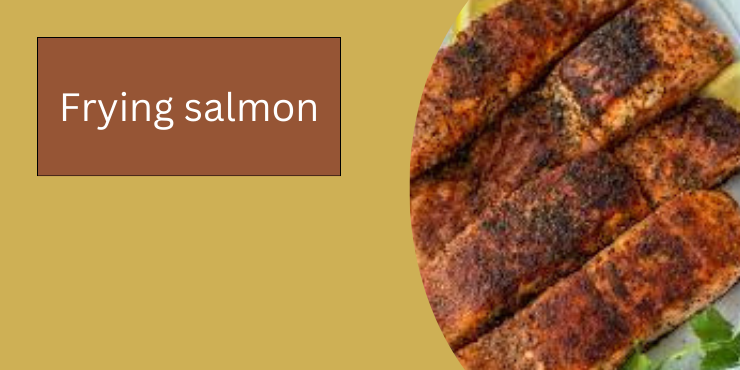Table of Contents
Frying Salmon: Salmon is not only a delicious seafood option but also incredibly nutritious. It’s packed with omega-3 fatty acids, which are essential for brain health and reducing inflammation in the body. Additionally, salmon is a great source of high-quality protein, making it an excellent choice for those looking to maintain muscle mass or support their weight loss goals. Furthermore, it’s rich in essential nutrients like vitamin D, vitamin B12, and selenium, which play crucial roles in various bodily functions.
Types of Salmon
There are several types of salmon available in the market, each with its unique flavor and texture. Atlantic salmon, also known as farmed salmon, is one of the most common varieties and is readily available year-round. Sockeye salmon, with its deep red flesh, is prized for its rich flavor and firm texture. Chinook salmon, often referred to as king salmon, is the largest and arguably the most flavorful species of salmon.
Choosing the Right Salmon for Frying

When selecting salmon for frying, it’s essential to choose fresh, high-quality fillets. Look for salmon with firm, shiny flesh and a mild sea aroma. Avoid fillets with any signs of discoloration or a fishy smell, as these may indicate that the fish is not fresh.
Preparing Salmon for Frying

Before frying salmon, it’s crucial to prepare the fillets properly. Start by cleaning and gutting the fish if necessary. Then, carefully fillet the salmon, removing any bones or skin. Once the fillets are ready, season them generously with salt, pepper, and any other desired herbs or spices.
Frying Salmon: Step-by-Step Guide
- Preparing the Pan: Heat a skillet or frying pan over medium-high heat and add a small amount of oil or butter to prevent sticking.
- Seasoning the Salmon: Place the seasoned salmon fillets skin-side down in the hot pan, being careful not to overcrowd the pan.
- Frying Process: Cook the salmon for 3-4 minutes on each side, or until the flesh is opaque and flakes easily with a fork. Avoid flipping the fish too often to prevent it from breaking apart.
Tips for Perfectly Fried Salmon
- Proper Temperature Control: Maintain a consistent cooking temperature to ensure that the salmon cooks evenly without burning.
- Avoid Overcrowding the Pan: Cook the salmon in batches if necessary to prevent overcrowding, which can result in uneven cooking.
- Using the Right Oil: Use oils with high smoke points, such as olive oil or avocado oil, to prevent the fish from absorbing too much oil and becoming greasy.
Serving Suggestions
Once the salmon is fried to perfection, it can be served in a variety of ways. Pair it with simple side dishes like steamed vegetables or a fresh salad for a light and healthy meal. Alternatively, serve it with rice, quinoa, or mashed potatoes for a more substantial option. Garnish the salmon with lemon wedges, fresh herbs, or a drizzle of sauce for added flavor and visual appeal.
Conclusion
Frying salmon is a simple yet delicious way to enjoy this nutritious seafood. By following these tips and techniques, you can achieve perfectly fried salmon every time. Whether you’re cooking for yourself or entertaining guests, fried salmon is sure to impress with its flavorful taste and tender texture.
FAQs
- Can I use frozen salmon for frying?
- Yes, you can use frozen salmon for frying, but make sure to thaw it completely before cooking for even results.
- What is the best oil for frying salmon?
- Oils with high smoke points, such as olive oil or avocado oil, are ideal for frying salmon.
- How do I know when salmon is cooked through?
- Salmon is cooked through when the flesh turns opaque and easily flakes with a fork.
- Can I marinate salmon before frying?
- Yes, marinating salmon before frying can add flavor, but be cautious not to marinate for too long, as the acid in the marinade can break down the fish.
- What are some alternative seasoning options for fried salmon?
- Besides salt and pepper, you can season salmon with herbs like dill, parsley, or thyme, as well as spices like paprika or garlic powder.

